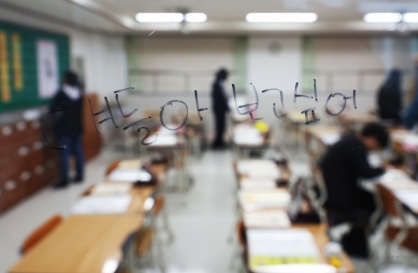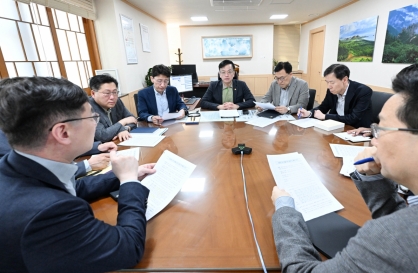2005년, 스마트폰이 나오기 전 시절. 대부분의 사람들이 휴대폰의 DMB를 통해 TV를 시청했다. 본인도 중요한 야구나 축구 경기, 토요일 저녁은 무한도전, 일요일 저녁은 개그콘서트를 지하철이나 외부에서 휴대폰 DMB를 통해 보곤 했다. DMB는 스마트폰 이전 시대에 멀티미디어 콘텐츠를 즐길 수 있는 거의 유일한 통로였다.
휴대폰에서 DMB를 시청할 수 있게끔 한 핵심 기술 중 하나가 RF 튜너 칩이다. 이 칩은 고범규 현 하이딥 대표가 2000년, 그의 나이 32세 때 설립한 인티그런트 테크놀로지 (Integrant Technologies)에 의해 처음 개발된 기술이다.
삼성전자, LG전자 등 국내 모든 DMB 용 휴대폰 제조사들이 인티그런트 테크놀로지 사가 개발한 칩을 사용했었고, 국내 시장점유율은 50%를 넘었었다고 한다
2006년 DMB 기술의 가능성을 높이 산 미국의 아날로그 디바이스(Analogue Devices Inc.)사에 1억 6천만 불 (한화 약1890억원) 에 인수되었다. 이 인수 건으로 고 대표는 38세에 평생 돈 걱정은 할 필요 없을 정도의 천만장자 반열에 올랐다.

고 대표는 소위 말하는 흙 수저 계급 출신이다. 부모의 이혼 후 강원도의 한 판잣집에서 어린 시절을 보냈다고 언론의 한 인터뷰에서 밝힌 바 있다. 하지만 경제적인 어려움에 대해 환경의 탓을 하기보다 자신의 힘으로 극복하기 위해 노력했다.
"돈이 없이 태어났지만, 50살이 넘어서 돈이 없으면 그것은 내 잘못일 확률이 크다고 생각했다. 50대에는 금전적인 자유를 얻고 싶었다,"라고 고 대표는 말했다.
그리고 그는 50대의 성공을 위해 30대에 투자를 해야 한다고 생각했다고 한다.
"30대에 실패를 해서 뭔가를 배우고, 40대에 베팅을 하고 나서 50대에는 성공을 이루리라고 다짐했다."
사업을 한 사람 10명 중 8명은 망하고, 1명은 간신히 유지만 하며, 단 1명만이 성공을 한다고 흔히 말 한다. DMB 칩 개발 사업을 시작한 첫해는 그에게 시련의 시기로 남아 있다. 비용이 많이 들어가는 반도체 칩 제품 개발에는 100억이 넘는 자금이 필요했다. 6억 원으로 시작한 고 대표는 투자를 받기 위해 불철주야 뛰어다녔지만, 계속해서 퇴짜를 맞았다고 한다.
약 30여 차례 퇴짜를 맞은 후 160억 원의 개발자금을 투자 받아 낸 고 대표, 수많은 문전 박대에도 그는 투자자에게 다시 찾아가서 문제점이 무엇이고 왜 투자를 안 하는지 되물었다고 한다.
“투자를 얻으러 다니며 한 번에 투자를 받은 적이 단 한 번도 없다. 나를 안지 1년 뒤에 투자를 한 적도 있다,”고 말하며, 사업을 하기 위해서는 끈기를 가져야 하며 항상 투자자들에게 문제점이 무엇인지 항상 질문을 하라고 조언을 했다.
삼성에서의 경험
카이스트에서 박사학위를 받고 삼성전자에서 약 3년 간 칩 개발에 참여한 고 대표는 고액 연봉 제안을 뿌리치고 어려운 창업의 길에 발을 내디뎠다. 촉망받던 반도체 연구원이던 고 대표는 삼성전자에 남았다면 승승장구할 수 있었을 텐데, 그는 왜 삼성전자를 나온 것일까?
고 대표는 그 이유를 삼성전자의 통찰력과 절박함의 부재를 꼽았다.
고 대표는 삼성전자에서의 경험을 회상하며 “몇 년 열심히 일을 해도 퀄컴 등과 같은 다른 반도체 회사 뒤만 따라가며 업체들의 제품을 따라 만들기만 했다. 그다음에 무엇을 할까를 생각하고 만들면 그 업체들과 맞짱을 떠볼 수 있었을 텐데, 그걸 하지 못했다,”고 말했다.
그는 또한 “절박한 마음으로 공부해야 하는데, 대기업이라 절박한 마음이 없었다. 미래를 보지 못하고, 미리 봐도 하지 않는다. 위험이 있는 사업을 하다가 잘되면 괜찮은데, 안되면 ‘누가 이걸 하라고 했냐!’라고 하니깐. 눈에 보이는 것을 하면 리스크가 없는 거죠. 그러다 보니 남의 뒤치다꺼리만 하게 되는 것,” 이라고 말했다.
짧은 엔지니어의 수명에 대해서도 이야기했다. 엔지니어들이 활발하게 활동할 수 있는 기간이 약 10년이라고 본다. 박사학위 받고 약 10년. 그 이후는 매니지먼트 일을 하고 시키는 일을 주로 하는데. 이 10년간 주어진 연구할 수 있는 시간을 제대로 해봐야겠다는 생각을 하고, 삼성전자를 나왔다고 한다. 삼성전자를 나왔을 때 그의 나이 31살이었다.
25살 때 비교적 일찍 결혼을 한 고대표는 그 때 결혼을 안 했으면 결혼을 못 했을 것 같다고 웃음을 지으며 말했다.
중국이 기회
2010년 고 대표가 설립한 하이딥은 터치 기술 센서 및 기술을 개발하는 스타트업이다. 감압 식 터치 기술을 이용해 스마트폰의 화면을 누르는 강도에 따라 다른 명령을 내릴 수 있도록 하는 포스터치 기술을 개발했다. 위챗의 QR코드 스캐닝 기능을 하려면 앱을 열고, 메뉴를 선택하고 총 4번의 터치를 해야 하지만, 포스터치 기술을 이용하면 터치 횟수는 2번으로 줄어든다. 또한, 포스터치를 이용하면 사진 확대 기능을 두 손가락이 아닌 한 손가락으로 꾹 눌러주면 사용할 수도 있다.
하이딥의 포스터치 기술은 화웨이의 메이트S 스마트폰에 2015년 9월 2일 세계에서 처음으로 선보였고, 일주일 후 애플은 포스터치 기술과 유사한 “3D터치,”를 접목한 아이폰6s를 출시했다.
하이딥은 포스터치 기술을 2011년부터 개발했지만, 상용화를 제대로 준비 한 것은 애플워치가 나오고 난 이후이다. 애플이 유사한 포스터치 기술을 애플워치에 도입한 것을 보고, 아이폰 등 다른 애플 제품에도 해당 기술을 접목 시킬 것이라는 것을 고 대표는 직감할 수 있었다고 한다.
고 대표는 포스터치 기술을 스마트폰에 접목 시키기 위해 국내 유수 스마트폰 제조 업체 들을 찾아갔지만, 쉽사리 포스터치 기술을 자사의 스마트폰에 도입하려 하지 않았다고 한다. 오히려 화웨이와 같은 중국 업체들이 새로운 기술에 대한 관심을 더욱 적극적으로 보였다고 한다.
화웨이와의 협력에서 고 대표는 2000년대 중반 모토로라와 노키아를 따라잡기 위해 끊임없이 노력하던 삼성의 모습을 보았다고 한다. 한두 가지의 문제가 있을 때 저녁 12시까지 매일 밤 연구하던 화웨이의 연구팀이 인상적이었다고 한다.
화웨이의 P9 등 제품에 하이딥의 포스터치 기술이 들어가 있으며, 중국 업체 중 가장 엄격한 품질 기준을 가진 화웨이에 공급한 이상 다른 중국 스마트폰 제조업체에 공급은 시간 문제일 것이라고 한다.
그는 2014년 4억이었던 하이딥의 매출은 2015년 40억으로 성장했고, 올해는 140억 정도가 될 것으로 예상했다.
현재 하이딥은 일부 고객사들과 함께 자동차용 포스터치 기술 도입을 논의 중이라고 한다. 자동차 내부에 설치되어 있는 디스플레이나 핸들에 부가기능 작동 디스플레이에 터치포스 기능이 탑재 될 것으로 예상되고 있다. 포스터치가 차량에 적용되면 최소한의 터치 횟수로 작동 가능하게 하는 디스플레이가 도입 될 것으로 기대되고 있다.
고 대표는 포스터치가 앞으로 LCD뿐만 아니라 아몰레드에 사용될 예정이라고 하며, 스마트폰 업계의 포스터치 기술 도입 속도에 따라 앞으로 회사의 IPO도 계획하고 있다고 전했다.
(코리아헤럴드/더인베스터 김영원 기자)(wone0102@heraldcorp.com)
<영문 기사>
[INTERVIEW] HiDeep out to revolutionize smartphone navigation
The way mobile users interact with their handsets has changed in tandem with technological advancement -- a physical keypad, a touch screen, a stylus pen and artificial intelligence-powered voice command.
Now, yet another type of technology is expected to go mainstream, according to Brian Ko, founder and CEO of touch display tech startup HiDeep.
HiDeep develops Force Touch, which senses the amount of pressure applied on the smartphone screen to allow the user to access and execute different commands by simply changing the pressure levels. This is made possible by a film with force sensors under the screen that measures changes in the distance between the panel and cover glass.
“Force Touch was first unveiled in 2015, and we believe this will become a common feature on most smartphones next year or so,” the HiDeep CEO told The Investor in a recent interview. He anticipated more Android smartphones would adopt the technology down the road.
HiDeep’s sensing technology can be used to summon shortcuts to the sub-functions of mobile applications and help smartphone users to zoom in or out a picture.
When scanning a QR code on mobile messenger app WeChat to add new friends, for example, it requires users to tap four times to initiate the scanning feature of the mobile app. Force Touch, however, shortens the process to two -- they can press the app, a little harder than usual, and choose the QR code-scanning feature in a pop-up menu.
The Korean startup partnered up with Huawei of China to unveil Force Touch for the first time in the world. Huawei showcased the Mate S smartphone, fitted with the sensing technology, on Sept. 2, 2015, a week before California-based Apple took the wraps off the iPhone 6s that featured its own Force Touch technology, dubbed the 3-D Touch.
Following Apple’s example, more companies are looking to adopt the latest technology, according to Ko.
Currently, HiDeeps’s Force Touch sensors are installed in Chinese smartphones, including Huawei’s P9 Plus and Gionee’s S8.
He said the Chinese players, which are aiming to overtake traditional smartphone powerhouses such as Apple and Samsung, appear to be more proactive in deploying new technologies.
Before collaborating with Huawei, HiDeep had contacted a wide variety of global smartphone makers -- presumably including Samsung and LG -- but Huawei was the only firm willing to jump on the bandwagon.
“The top management of Huawei paid keen attention to the Force Touch technology and really wanted to roll out the feature before other rivals, such as Apple,” said the CEO.
He said that it was impressive to see Huawei researchers working around the clock to find solutions to technical problems, comparing them with Samsung researchers in the mid-2000s when the Korean tech giant was desperately trying to catch up with global phone makers Nokia and Motorola.
Samsung is currently said to be testing a pressure-sensitive screen technology for its flagship Galaxy smartphones.
Anticipating that the revenue of HiDeep, which has 65 researchers and employees, will more than triple to 14 billion won (US$12 million) this year from 4 billion won in 2015, Ko said his firm plans to go public in the coming years.
When asked about his estimates of future earnings, he said it depends on how fast other smartphone makers adopt the pressure-sensitive display technology.
Integrating Force Touch technology into automobiles can also be a big opportunity for HiDeep, Ko said.
“The company is negotiating with car makers for partnerships,” he added, but declined to specify the manufacturers.
Who is Brian Ko?
Brian Ko founded chip design firm Integrant Technologies in 2001 after working as a semiconductor researcher at Samsung Electronics.
He and his R&D team at Integrant developed the world’s first mobile radio-frequency chips for the digital multimedia broadcasting, or DMB, in the early 2000s.
Before video streaming became available on a smartphone, DMB was almost the only way for mobile users to watch TV content, especially in Korea.
Integrant was acquired by US chip company Analog Devices in 2006 for around US$160 million.
Despite the fortune he made from his first business, the entrepreneur said, he could not help but launch a new business with HiDeep to pursue more meaningful achievements.
“I was thrilled to see people, on the subway or anywhere else, watching DMB content on their mobile phone in the past, and it would be exciting to see people use Force Touch on their smartphones.”
By Kim Young-won (wone0102@heraldcorp.com)







![[KH Explains] How should Korea adjust its trade defenses against Chinese EVs?](http://res.heraldm.com/phpwas/restmb_idxmake.php?idx=644&simg=/content/image/2024/04/15/20240415050562_0.jpg&u=20240415144419)










